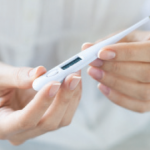I flip back to the title page in the notebook—Whitman, Connolly, and Favio, New Orleans. A fleeting image of a lawyer objecting to his opponent’s tactic flashes to mind: “You’re leading the witness!!” I’ve read enough. Time to see the patient.
In the Exam Room
Mrs. Morse says she is tired. So tired, she has all she can do to get out of bed most mornings. “My mother’s a godsend for those days I have trouble just putting one foot in front of the other. Plus, she’s another set of ears. Honestly, I can’t count the times I’ve completely forgotten everything the doctor told me. Brain fog, that’s what it feels like I’m in, a complete brain fog.”
I look up from my notes. “Other than the fatigue, how are you feeling?”
She pulls her shoulders back and sighs. “Weak. I’m weak. The pain is everywhere.”
“That must be difficult,” I say. “Does the pain keep you up at night?”
“I never sleep. I don’t know the last time I slept.”
Mrs. Morse’s mother shakes her head in disbelief. “On her bad days—I live next door—I come over and help with the children, get them dressed, fix their lunches, get them off to school. Tom, Hayden’s husband, is away frequently on business trips, so he doesn’t know just how much she struggles. I don’t think he realizes …”
“And all of these problems? They go back how long?” I ask.
“About two years after the breast implants,” Mrs. Morse whispers, almost inaudibly. “The rashes, the fatigue, the pain, it slowly crept over me, until now—look at me? Is it the lupus? Is that what I’m struggling with?”
Momentarily, I say nothing. I am sorting things out, sifting the evidence and trying to maintain my objectivity. In truth, I would have to say my patient looks remarkably healthy, no, beyond healthy, absolutely stunning. I take off my glasses and clean them with a tissue paper.
Lupus is not a disease diagnosed by a checklist of symptoms and a borderline ANA. The diagnosis requires objective physical findings and significant, widespread lab abnormalities. I ask her to sit on the exam table. Her mother reflexively moves to her side and takes an arm. Mrs. Morse waves her off, but the effort seems to exhaust her.
“I’ll be okay. Give me a moment. I’ll be okay.” A series of deep cleansing breaths follow.
Numerous studies addressed the issue, all with the same conclusion: Silicone breast implants do not raise the risk of breast cancer or other forms of malignancy. But if malignancy risk was not an issue, other concerns soon arose.
Physical Exam
I flash back to the image of Mrs. Morse hurrying down the hall to the bathroom. Focus. I am here to render an opinion. When all else fails, a former professor once reminded me, examine the patient.
